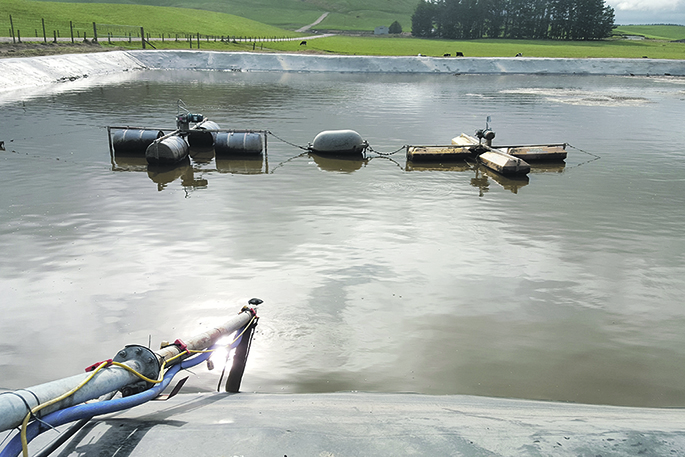Effluent is an inevitable part of any dairy farm system, but few farmers stop to think about whether their effluent is “good” or “bad” – and what makes it so in the first place, says David Law of Forward Farming Biological Consultancy. “A healthy effluent pond is clear and free from crust,” says David. “When irrigated to pasture, the effluent is light coloured to clear with very little odour. “In contrast, an effluent pond with any form of crust on top demonstrates that the effluent within is tending towards poor. Underneath the crust is a section of “dead water”, and at the bottom of the pond, a sludgy build-up.” Poor effluent, which contains elevated levels of methane and nitric oxide as unprocessed solids, is dark and strong smelling when irrigated to pasture. A pond sitting at rest with no stirring displays the true physical characteristics of the effluent. “However, it may be difficult to read an effluent pond that uses a solids separator or a weeping wall system; in these cases, a pH test will tell you if your pond is dominated by aerobic (good) or anaerobic (bad) bacteria.” Biological condition A healthy effluent pond, says David, is free from crust and sludge.The physical condition of the pond is dictated by the biological condition of the pond.The crust on a pond is feed that has not been digested by the cow. “In a healthy pond, aerobic bacteria thrive,” he explains. “They naturally digest these solids, or undigested feed, creating clear, processed effluent that is ready for soil to absorb. “Raw or anaerobic effluent contains solids which still need to break down before the effluent can be utilised by the soil, using valuable energy from the soil to break down.” The health of the pond is determined by its pH levels, and which bacteria are thriving under those conditions. A pond with a pH of 7.4 is ideal, creating a crust-free pond dominated by aerobic bacteria. “In these ideal conditions, the aerobic bacteria digest the undigested feed presenting as crust and sludge. Aerobic and anaerobic bacteria have competitive exclusion - the further the pH drops below the equilibrium of pH 7, the thicker the crust and the higher the percentage of anaerobic bacteria.” Stirring no benefit “In fact, you can calculate the pH of the pond by measuring the thickness of the crust,” say David. Contrary to popular belief, stirring does not change the biological makeup of the pond; it only temporarily breaks up the crust. “If your pond is anaerobic and you aerate it, it is a waste of effort as there is no aerobic bacteria present to breathe the air,” he adds. “Stirring a pond, even for eight hours a day, will not change the pond from an anaerobic state to an aerobic state; it simply disrupts the job of the aerobic bacteria to eat the crust and later, the sludge. “If the aerobic bugs are not present, in the case of a very low pH, you must change the pH to support the introduction of them in the short term, and follow up with a review of farm biology and systems. “Research from Lancaster University has shown that an aerobic, crust-free pond produces 67 per cent less greenhouse gases than a crusted pond. With this information available, farmers have to start thinking biologically.”



0 Comments
Leave a Comment